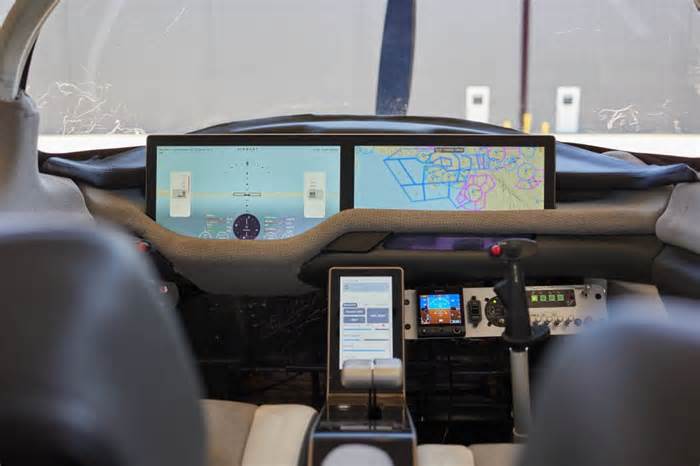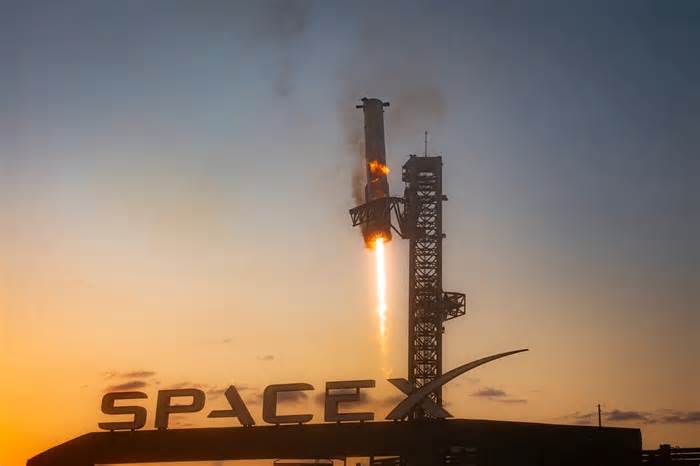
A Former SpaceX Engineer Is Building an Airplane Anyone Can Fly in One Hour
- by Observer
- Sep 23, 2024
- 1 Comments
- 0 Likes Flag 0 Of 5

Nikita Ermoshkin (left) and his co-founder, Soren Rademacher.
Airhart Aeronautics
In 2020, Nikita Ermoshkin, then an engineer at SpaceX, decided to get a private pilot license so that he could take day trips from his home in Los Angeles to San Francisco to visit friends and his favorite burrito place. The experience led to a lightbulb moment: in the era of self-driving cars and avocado-peeling robots, why is flying an airplane still so complex? “It’s kind of like driving a manual car with two steering wheels,” Ermoshkin told Observer.
Sign Up For Our Daily Newsletter
Sign Up See all of our newsletters
A year later, Ermoshkin quit his job and started a company with two fellow engineers, called Airhart Aeronautics, with the goal of building the equivalent of automatic transmission for airplanes. Airhart was admitted into Y Combinator’s Summer 2022 cohort, where it raised a pre-seed round. Named (approximately) after Amelia Earhart, the first woman aviator to solo fly cross the Atlantic Ocean, the startup is working on its first prototype, a four-seater called Airhart Sling, in partnership with Sling Aircraft, a manufacturer of light aircraft. If successful, a person with no prior piloting experience could learn to operate Airhart Sling in one hour, according to Airhart.
Airhart Sling is currently classified under the Federal Aviation Administration’s experimental/amateur-build category, meaning it won’t be allowed to be used for commercial purposes, and you’ll still need a regular private pilot license to operate it. But in the future,
Airhart looks to qualify the aircraft for new certifications, such as the MOSAIC (Modernization of Special Airworthiness Certification), to push for commercialization.
In an interview with Observer over the summer,
Ermoshkin discussed his vision for Airhart and the largely untapped market of personal aviation.
The following conversation has been edited for length and clarity.
Observer: Before founding Airhart, you worked at SpaceX for three years. Can you tell me about your work there and what prompted you to leave and start your own company?
Nikita Ermoshkin: At SpaceX, I was an avionics systems and integration engineer. I worked primarily on the fairing recovery program for the Falcon 9 rocket. I left in April 2021 to start Airhart. Ultimately, what motivated me was that I had just learned how to fly a year earlier, and I really loved it. But I also noticed how complex and difficult it is, and there’s a disconnect about the current market for general aviation that doesn’t quite sit right with me: we have this better way to travel, but why is nobody doing it?
So, we started Airhart to solve that problem and make flying so accessible that flying an airplane really is an extension of driving a car.
I’ve spoken to multiple people working at rocket companies, and it seems that all of them have a pilot license. Is that a thing in the space community?
I think so. I think there is an overlap between people who are into aerospace and who get excited about flying airplanes.
The true reason I wanted to get a pilot license was so I could fly to San Francisco to get burritos. [Editor’s note: It’s called Señor Sisig.] I live in Los Angeles. It’s typically a six- to seven-hour drive. One time, a friend of mine flew me to San Francisco on his plane. I loved that I could go for a day, hang out with my friend for the afternoon, go get lunch at my favorite burrito place, and fly back home in the evening.
A big selling point of Airhart is the easiness to fly. How easy are we talking about, and how is it different than the current way?
Flying a small airplane is incredibly complicated because you’re juggling all the different motions. On top of that, you have to navigate through the airspace and talk to air traffic control.
It’s kind of like driving a manual car with two steering wheels, and what we’re building is the equivalent of the automatic transmission—w
hen you push the stick left and right, it turns left and right and does all the coordination for you, and when you push the stick forward and back, the airplane just climbs and descends.
Does that require any new technologies?
We’re not relying on any new battery or propulsion technologies. We’re using the existing idea of a fixed-wing airplane, which has been well-known for over 100 years, and putting all of our efforts into changing the way people fly the airplane rather than trying to invent a new kind of flying vehicle. But we are using many modern UI and UX techniques to make it feel more like you’re using an iPad than some complicated computer system.
The interior of an Airhart Sling.
Airhart Aeronautics
How did you determine whether there’s going to be a market for this type of personal aircraft? And if so, how big is it?
Fundamentally, we are creating a new market here.
Almost every person in this country—about 300-plus million people—lives within 15 minutes, or 10 miles, of a general aviation airport. We have 19,000 airports in the U.S., but only about 100 are being used for commercial air travel, and the rest are general aviation and private airports that are relatively unused. So, we have all this infrastructure that is heavily underutilized.
What’s the idea behind a four-seat design?
The idea is that you can put your whole family on the plane. You go from Los Angeles to Mammoth to go skiing, which today people do every weekend, and it’s a seven-hour drive without traffic. During the ski season, people load up their cars on Friday afternoon, drive up, get in at midnight, spend their weekend skiing, drive back and get home at midnight, Sunday night. With our plane, it will be less than a two-hour flight.
How much training did it take to get your pilot license?
I spent about 80 hours on my initial private pilot license, which took about six months. And I spent another maybe 50 hours over three months on my instrument rating. That, right there, is indicative of the fundamental problem here and why making it easy to fly is such a big part of this because we want people to be proficient in flying airplanes in one hour of training instead of 100.
One hour. That sounds ambitious.
For reference, though, we have a simulator system set up with our flight control system fully in the loop there, which we use for both engineering development and demos. We would bring in people who have never flown an airplane before, let them try to fly, and they would crash constantly. But when our simulator system is turned on, they could fly, take off and land in like 10 minute.
What questions do you get the most when pitching to investors?
Honestly, the biggest one for a lot of people is they think it’s almost too good to be true. Like any aerospace company, regulation and certification is always a big question mark, and it’s just a matter of working through the certification plan with regulators.
The point we always want to drive home is that we have all this technology available and all of this infrastructure available to us to get around faster and more efficiently and we just don’t currently utilize it. That’s Airhart’s goal: to utilize and actually start moving toward the promise of the flying car and everything by building on what we have today rather than promising something impossible.
Please first to comment
Related Post
Stay Connected
Tweets by elonmuskTo get the latest tweets please make sure you are logged in on X on this browser.
Sponsored
Popular Post
Tesla: Buy This Dip, Energy Growth And Margin Recovery Are Vastly Underappreciated
28 ViewsJul 29 ,2024






 Energy
Energy




















Recent Comments
Emmanuel
Sep 23, 2024good
Reply